BUYING A DIAMOND? ASK THIS FIRST!
BEFORE YOU BUY THAT DIAMOND RING, ASK THESE 6 QUESTIONS FIRST
This post contains affiliate links. If you use these links to buy something I may earn a commission. Thanks! As an Amazon Associate I also earn from qualifying purchases.
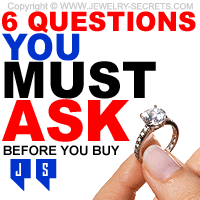
Buying a Ring?
Let’s say you’re in the Market to Buy a Solitaire Engagement Ring (One Stone). You go to the Store and look at Diamond Rings.
The Salesperson is Nice Enough and gives you some Basic Information about the Diamond and Quality.
The Price of the Ring Sounds Good. The Ring Looks Beautiful. The Diamond Sparkles…
Should you Buy it?
No! Not Yet!
There are 6 Crucial Questions you MUST Ask the Salesperson BEFORE you Exchange Money for Goods.
What are they? I’m Glad you Asked…
6 Questions to Ask Before you Buy that Diamond!
- Is the Diamond Certified?
- What’s the Cut of the Stone?
- Are there Eye Visible Inclusions?
- Does the Stone have Fluorescence?
- Can I view it under a Microscope?
- What’s the Return Policy?
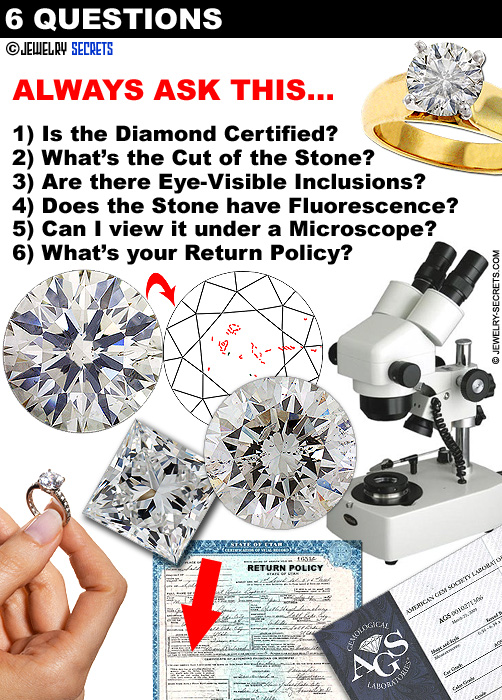
Let’s Dive in…
1) Is the Diamond Certified?
This is Vital if you’re Buying a Diamond Solitaire, or One Single Diamond.
You want to know, first of all, if it’s been Certified by an Outside Independent Laboratory (like GIA – which is the BEST), and Secondly, you want to see this Info on the Actual Report: Cut, Color, Clarity and Carat Weight (The 4C’s).
The 4 C’s are primarily the Characteristics used to Price Diamonds with, and learning about these 4 C’s will Help you Determine if the Diamond you’re looking at is a Good Diamond, or a Crappy Stone!
If the Diamond IS Certified (Comes with a Diamond Report), Ask WHO Certifies it!
This MATTERS!
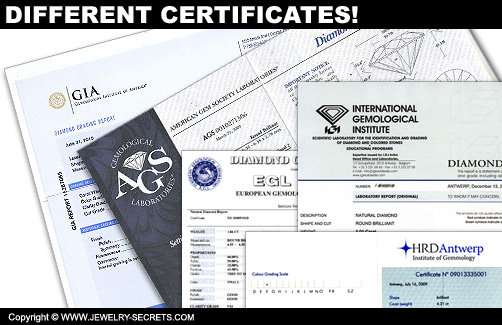
Not all Certificates are Equal!
Some hold more Weight and Accuracy than others. The Top TWO Diamond Grading Companies in the USA are: GIA and AGS!
I Would Trust No Others!
And if I had to Choose, I would 100% Pick GIA to Grade my Stone.
GIA Wrote the Book on Diamonds!
GIA will give you the Most Accurate and Strict Report Ever!
Plus, Viewing only GIA Diamond Reports will make it Easier to Compare Stones elsewhere. You’ll be Comparing Apples to Apples and really see which Jeweler is giving you a Better Deal for that Diamond.
If you Buy a Stone that’s NOT Certified, then you really won’t have any idea of what it is you’re truly Buying.
The Jeweler could Exaggerate the Quality of the Stone (Grade Bump), and you may end up Paying Much More than you Ought to for that Stone.
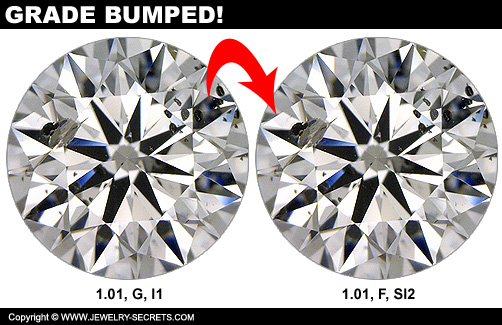
Now this does get much Trickier if you’re Buying a Wedding Set, or a Diamond Ring with Multiple Stones. You can’t Grade Every Single Diamond with it’s own Diamond Report. It’s just Not Feasible. Reports Generally Cost a Couple Hundred Dollars Each, and it would Increase the Price of the Ring Substantially.
Usually just the Larger, Center Stone is Certified.
If that’s the Case, ask them what the Quality is, and then Compare it with Certified Stones of the Same Exact Quality… Just to see how they look side by side.
And always, get the Quality in Writing!
You want to see the 4C’s listed on the Receipt or Appraisal.
They must include: Cut, Color, Clarity and Carat Weight!
I.E. .76 Carat, Round Brilliant Cut, SI1 Clarity, G Color, Cut Grade: Excellent.
And Speaking of Cut Grade… That’s Our Number Two Question…
2) What’s the Cut of the Stone?
This Question alone will show you how much the Salesperson knows about Diamonds and Cut.
Most of the time the Salesperson will simply refer to “CUT” as the Shape of the Stone… i.e. “This Diamond is Princess Cut“.
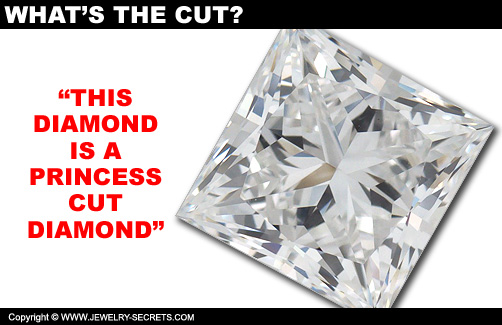
All this tells you is that the Cutting Style is probably Rectangular or Square. It says nothing about the Quality of the Cut.
The Shape (Round, Square, Rectangle, Triangle, Pear…) is NOT what you’re looking for.
What we want to know about “CUT” is; How is the Diamond Proportioned? How does it React with Light? Is the Stone Cut Narrow or Spread? Is the Stone Lumpy or Deep?
CUT IS VITAL!
Cut Alone Determines how much a Diamond will Sparkle and Shine.
The Better the Cut, the Better the Brilliance, Scintillation and Fire!
CUT = LIFE
You want to hear something more along the lines of this: “This Diamond has an Excellent Cut, so the Light Play in the Diamond gives you the Maximum Amount of Brilliance, Sparkle and Fire!“
Cut is listed right on the GIA Diamond Report.
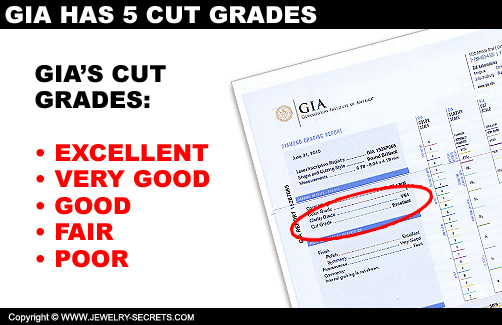
There are 5 Cut Grades:
GIA has Five Different Cut Grades when it comes to Diamonds:
- Excellent
- Very Good
- Good
- Fair
- Poor
I would only Advise Buying a Diamond with a Cut Grade of Excellent or at the least, Very Good.
That is, if you want your Diamond to Sparkle! :)
Cheaper Diamonds will often have a Poor Cut, or a Cut that Loses Light and Brilliance. It could make a Diamond Appear Dark, Dull and Dead!
Not Very Pretty!
So always ask what the Cut of the Diamond is. Look at the Certificate. Look at the Polish and Symmetry as well. These Affect how a Diamond Interacts with Light.
Opt for “Excellent” or “Very Good” in these Ratings as well.
Lastly… Look at the Girdle Grade. You don’t want a Diamond that have a Very Thick or Extremely Thick Girdle to it. It will make your Diamond look Thick, Deep, and the Girdle will stand out and be Obvious.
Likewise, you also don’t want an Extremely Thin Girdle either. Very Thin Girdles BREAK!
The BEST Girdle Grades to get are: Thin, Medium or Slightly Thick. Anything else is just a Waste! :)
3) Are there Eye Visible Inclusions?
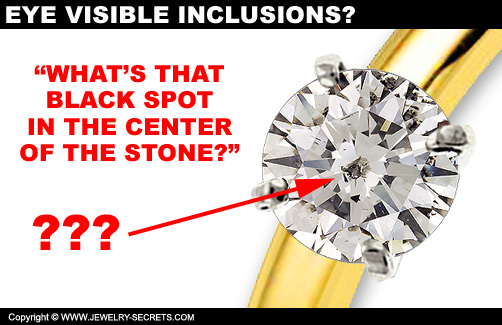
Your Fiance will Not be Happy if she looks down and sees Black Spots in her Beautiful Diamond. Especially since she has to Wear it for the Rest of her Life.
So make it a Point to not only ask if there are Eye-Visible Inclusions in the Stone. Look Good and Hard at the Stone from all Angles and Sides, even from the Bottom View.
Many times Diamonds WILL have Eye-Visible Flaws, Lines, Clouds, Cracks, Chips, Dots, Feathers, that can be seen with your very own Eyes.
That is, if you look for them
Usually the Diamond Clarities that Exhibit Visible Flaws are: SI2, I1, I2 and I3 (as well as any EGL Certified SI3 Diamonds).
If you’re Buying SI1 or higher, you shouldn’t ever have to Worry about Seeing Flaws. You’ll need a Microscope or a 10x Jeweler’s Loupe to see those.
And That’s Good! :)
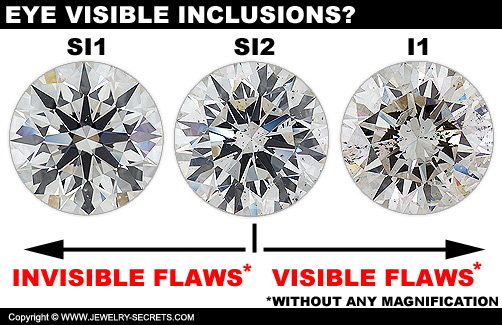
Because once you see a Flaw in a Diamond, you’ll always see it, and it will Stand out like a Sore Thumb.
Stick with SI1 or Higher, and you won’t Worry about Seeing Spots! :)
4) Does the Stone have Fluorescence?
You can have an Extremely High Clarity Diamond with a Very High Color (like VVS1, E), and if the Stone has Fluorescence, it could make that High Quality Stone look like Crap (could).
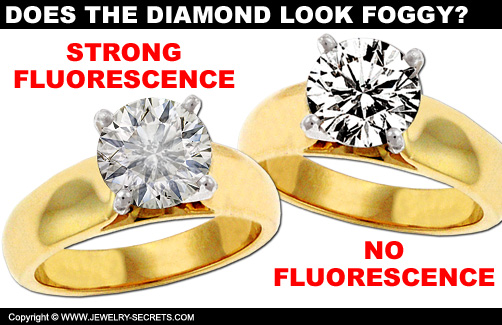
Not Cool!
And if you don’t know about this, and ask about it (as the Salesperson probably Won’t Bring it up), then you could be Buying a Stone that Costs a Ton, but Doesn’t Sparkle and Shine like the Cheaper Quality Stones.
And that’s Sad!
Fluorescence is when certain Diamonds will Glow-in-the-Dark under a Black Light.
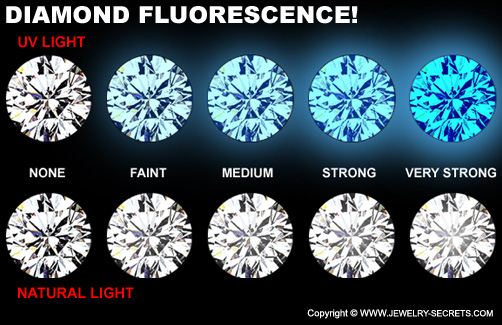
This is a Natural Phenomenon and some Diamonds have it, others don’t.
Fluorescence is listed on the GIA Diamond Report.
Fluorescence doesn’t Affect every Stone though. Some Diamonds can have Fluorescence and look Perfectly Normal and Sparkle like Crazy.
But others can look Cloudy, Foggy, Hazy or Milky.
A Light Killer!
So I generally, as a Rule, Advise customers to Buy Diamonds without Fluorescence. Just to be Safe.
Unless you can actually View that Diamond in Different Lighting Atmospheres to see for yourself.
If you’re Unsure, stick with No Fluorescence. You don’t want to Hinder the Beauty and Sparkle of the Stone in any way.
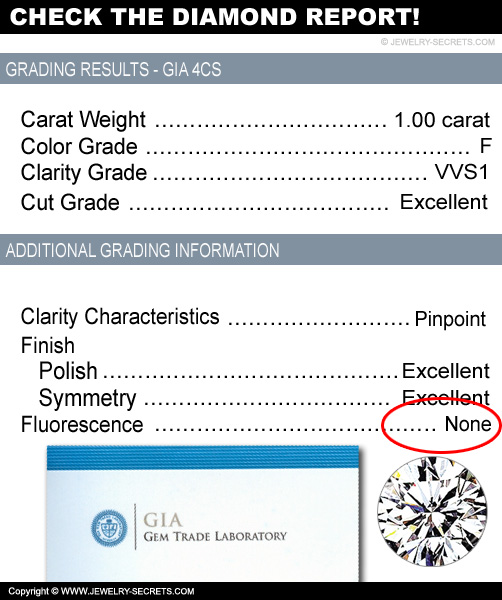
5) Can I View it under a Microscope?
If you can’t View the Diamond under 10 Magnification, or a Microscope, DON’T BUY IT!
And if they hand you a Jeweler’s Loupe instead, ask to View it under a Microscope instead. People have a Much Harder Time Holding and using a Loupe than a Microscope.
Stick with a 10x Microscope and you’ll be Just Fine.
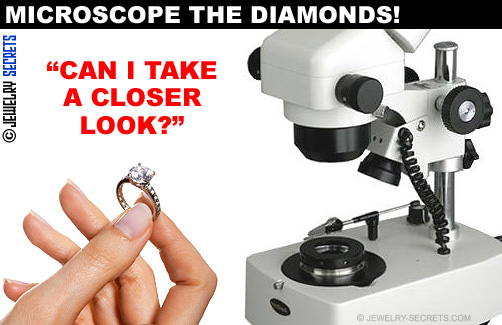
What Should you Look For?
Look for things inside the Stone like: Huge Black Spots, Cracks, Fissures, Feathers, Lines, Cracks… Things that could run across the Stone and Weaken the Integrity of the Diamond. Look for Cloudy Spots, Darkness, Chips on the Girdle, Weird Reflections…
Viewing the Diamond up Close and in Detail will really show you what you’re Buying.
It’s like looking under the Hood of a Car.
You Want to See what’s Inside
Flaws that could be Obvious at a Certain Angle. Or ones that could Cause Further Damage to the Stone if too Close to the Edge.
You can also View and Compare the Flaws in the Diamond with the Flaws listed on a Diamond Plot (which is on a Full GIA Diamond Report). Like so…
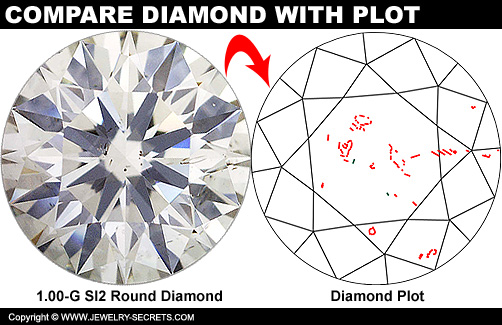
You can also see how thick the Girdle is under the Scope. You can check the outside for Nicks, Cracks and view the Laser Inscription of the Stone (if it’s Laser Inscribed – this will also be listed on the Diamond Report).
Viewing stones under a Microscope will also allow you to Compare Diamonds Easier.
You’ll see that there is a Wide Range and Difference in Inclusions and Flaws.
Even in the Exact Same Clarity!
i.e. All VS1 Diamonds will NOT appear the Same! Nor have the Same Amount, Size, Appearance, and Position of Flaws. The Cuts will be Different. The Colors Different. Even the Symmetry will look Different…
Take a Peek…
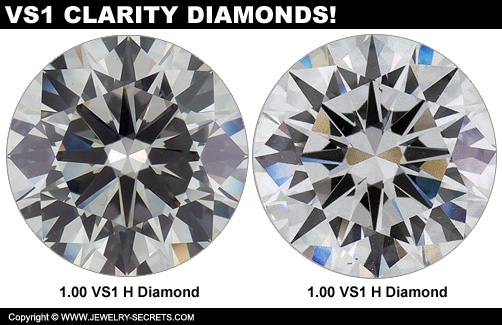
Diamonds are ALL Unique
View a Bunch of them to really get a Good Feel of what a Certain Clarity or Color looks like.
It will help you Decide what Quality to Buy.
6) What’s the Return Policy?
Let’s say you Buy the Diamond Ring, and a Month later you see a HUGE Crack in the Side of the Stone.
You take it back to the Jewelry Store, and they tell you that it’s not a Crack. It’s an Inclusion called a “Feather“, and it’s always been there. They even go so far as to show you the Feather on the GIA Diamond Report. It’s all right there, you just missed it.
You ask if you can Return the stone, and they say “NO, you only have 10 Days from the Date of Purchase to Return it!“
Now you’re Stuck with the Stone, and with the HUGE Crack!
CONGRATS!
Or, let’s say you Buy a Ring, and Later that Day you see an Advertisement at a different Jewelry Store offering that Same Quality of Stone for LESS.
Much Less!
You go back to the Original Store and they tell you that they have NO Return Policy!
It’s yours to Keep!
The Point is; Ask what the Return Policy is. See what the Actual Requirements or Penalties are.
Is there a Restocking Fee?
Can you Return it if it’s been Worn?
Can you Return it if it’s been Sized, Engraved, or Custom Designed?
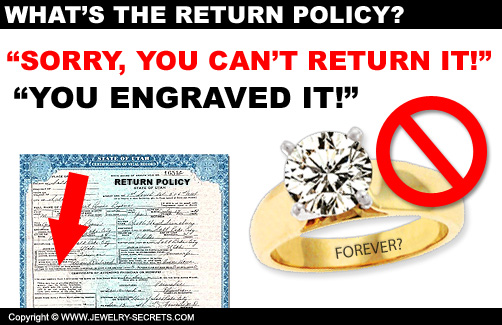
Many things can Prevent you from Returning a Ring. Find out what they are.
Plus, if you Buy the Diamond on Clearance, or a Special Sale, you may Not be Eligible for a Refund.
Are all Sales Final?
Find Out!
Because is she says “NO“… You’re Left Holding the Ring!
So Read and Learn about the 4C’s Before you Buy!
And then be Prepared to ask all the Right Questions.
Other Questions to Ask…
Other things you may also want to Ask:
- Does the Diamond have a Guarantee or Warranty?
- Are your Repairs and Sizings done on Site (in house)?
- What’s your Trade in Policy?
- What’s the Bottom Line Price?
It’s your Money!
If you Don’t Ask, you Won’t Know!
Happy Shopping! :)














Leave a comment